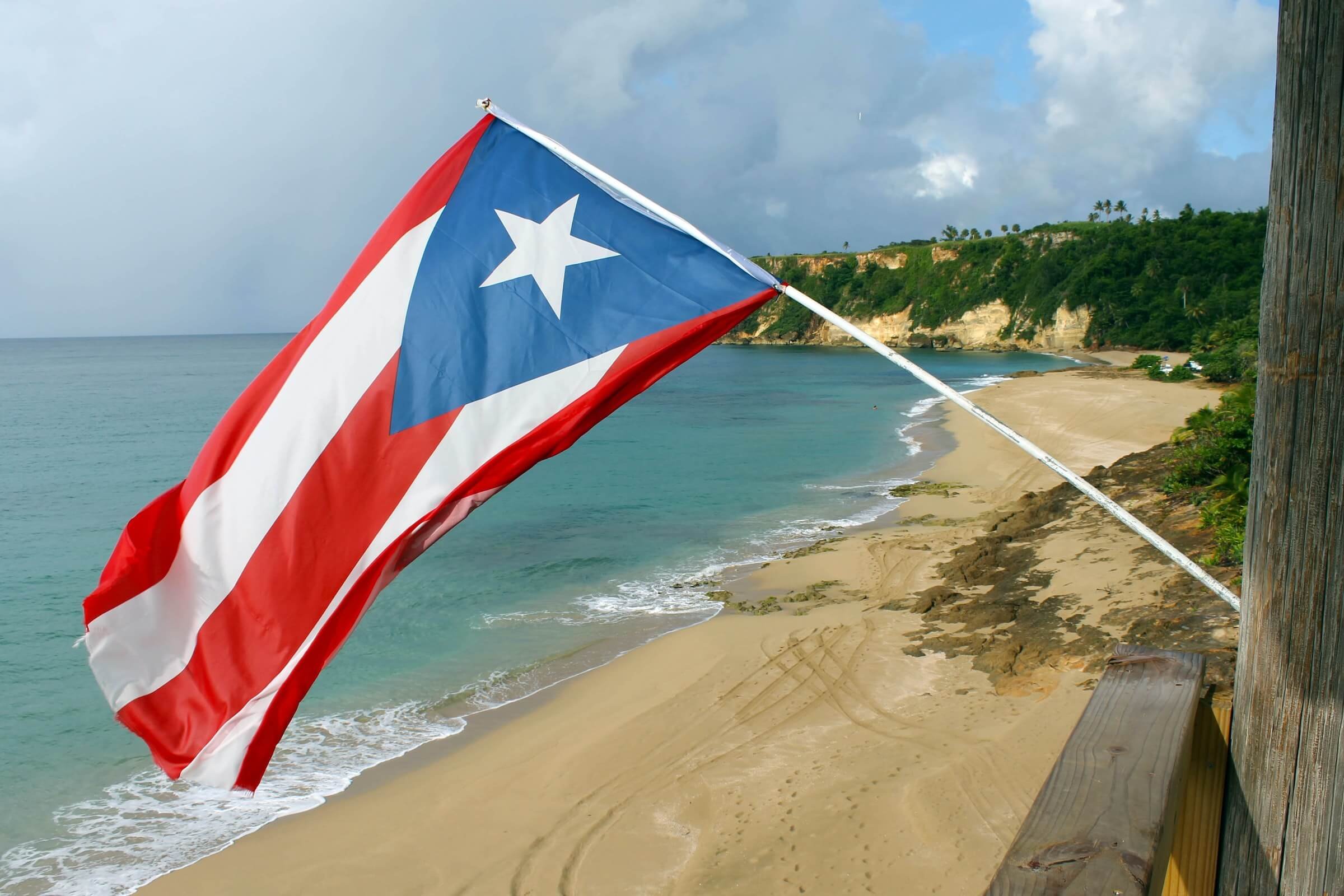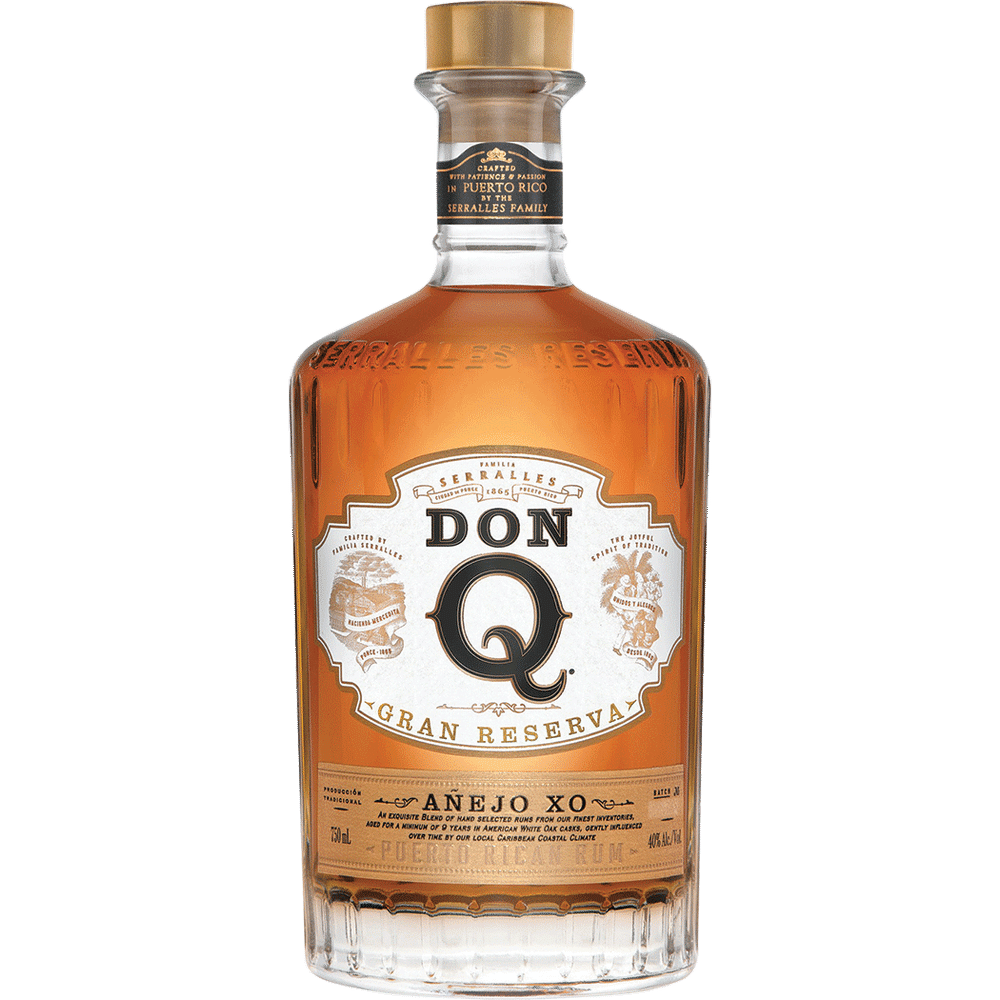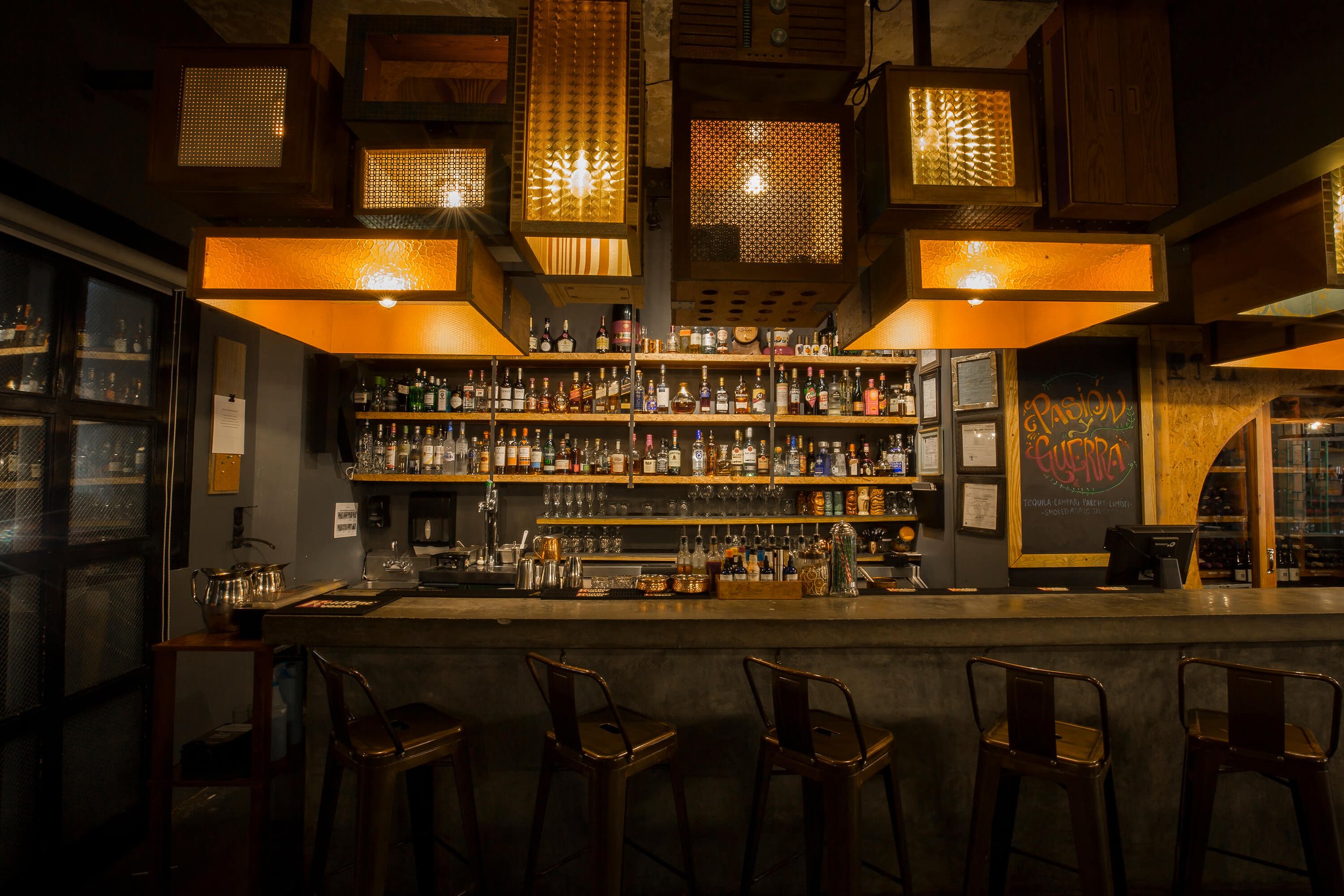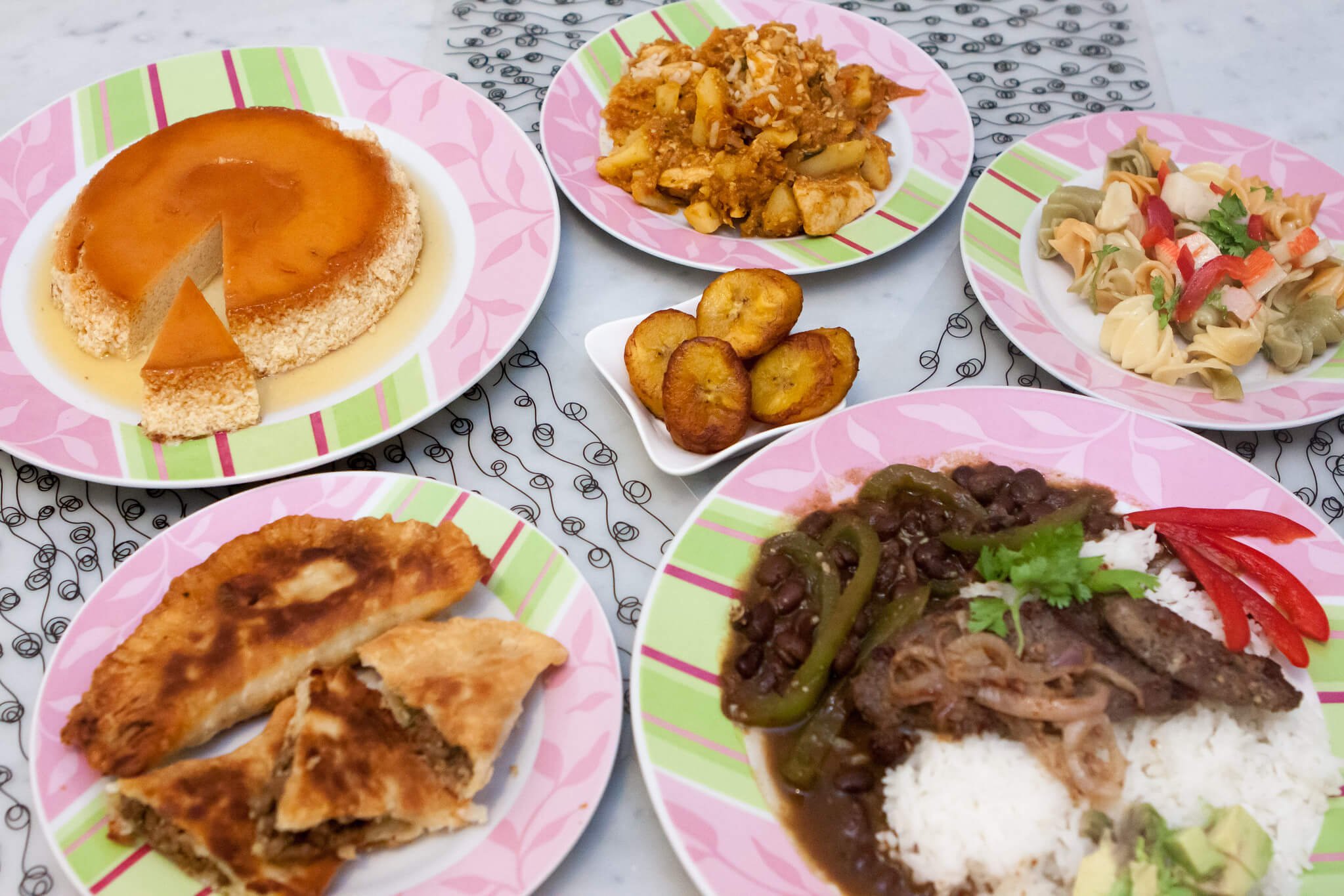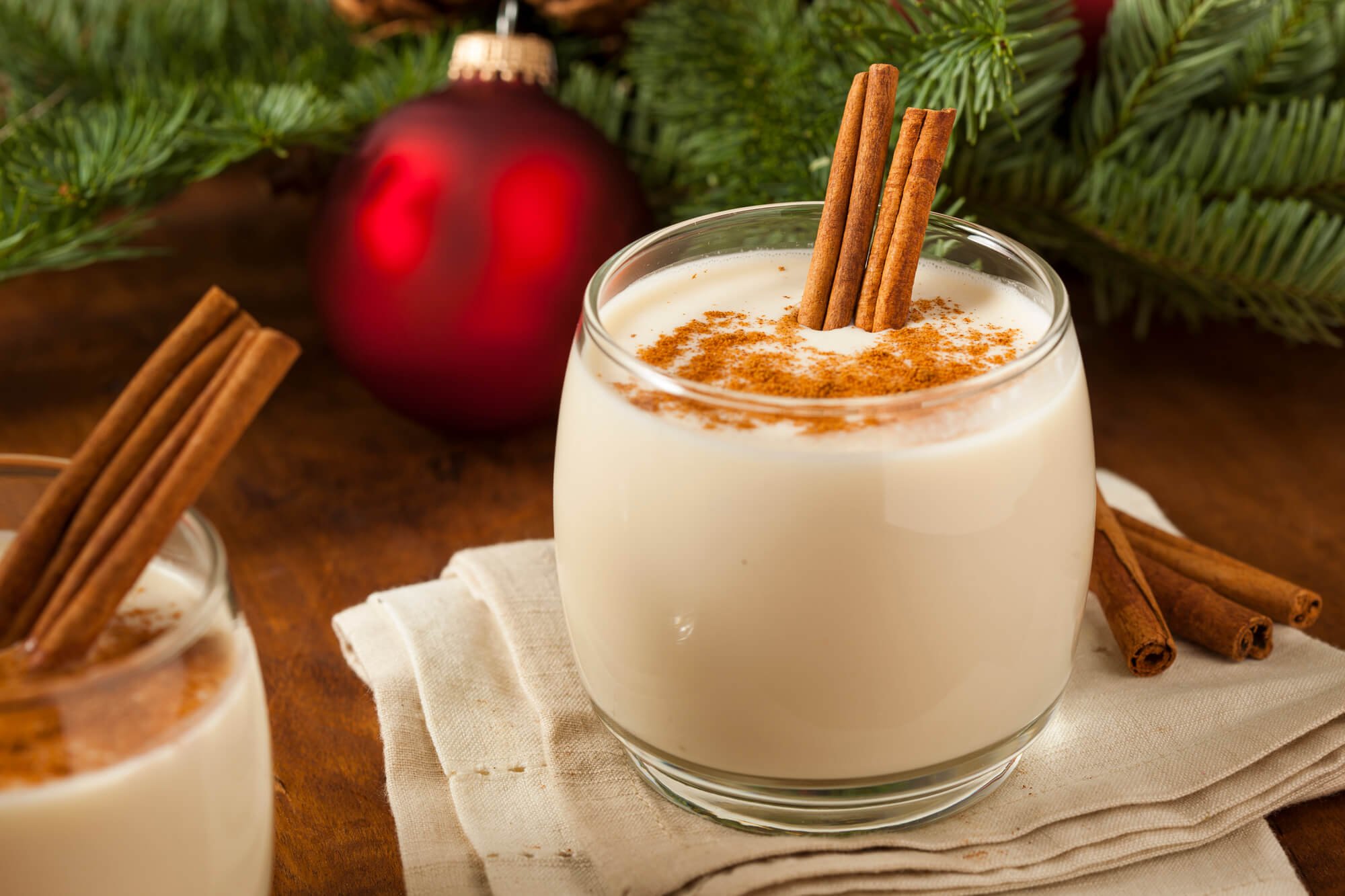The Perfect Food Pairings for the Iconic Drinks of Puerto Rico
Everyone wants their piece of Puerto Rico’s sunshine. With 300 miles of beaches, sunny weather year-round, mountains and caves to explore, the only tropical rainforest in the United States, cocktails for days, and easy accessibility—it’s 1,000 miles southeast of Miami—the island of Puerto Rico has become one of the most popular destinations in the world. (Through the end of November, 817,034 visitors streamed into Puerto Rico from outside the U.S., and 8,496,512 came from the continental U.S., up 70.8% and 2.6% respectively year-over-year, according to data gathered from Puerto Rico’s tourism bureau).
But behind and beneath the picture-perfect ‘Gram of visitors sipping pina coladas from pineapples on white beaches next to turquoise waves and white sand is a complex array of historical and cultural forces that are being reckoned with and in some cases, celebrated, through Puerto Rico’s food and drinks makers.
Puerto Rican History 101
Why is everything on this pristine island so complicated? All signs point to the past.
Puerto Rico is a melting pot of Taíno, African and Spanish traditions; together, they have created something new and beautiful, but the recipe behind the delicious stew is darker than its current, vibrant flavors would have you believe.
The island became a Spanish colony in the 16th century after the arrival of Christopher Columbus in 1493. The Spanish, once they realized the astounding amount of gold the island harbored, immediately began conquering the indigenous people, or Taínos, who were organized into small villages led by caciques (chiefs), and who thrived on the island’s bountiful fishing opportunities, and through basic agriculture.
Under Spanish rule, Puerto Rico’s agricultural system—sugar cane, coffee and tobacco were among the largest cash crops—thrived, and Taíno culture held on in pockets of the island, despite their people’s general state of enslavement.
In the early 16th century, African slaves—primarily from the Gold Coast—were brought to Puerto Rico to the work in the gold mines and on plantations, and in the process, they infused the island with African culture, language, art and foodways.
In the late 19th century, the independence movement on the island gathered force, and an autonomous government was granted by Spain—but it didn’t last long. Following the Spanish-American War in 1898, Puerto Rico became part of the United States.
In the aftermath, the U.S. set out to Americanize Puerto Rico through governmental and educational programs that transformed—and critics would say—almost destroyed its distinct identity. Through programs like Operation Bootstrap in 1940, Puerto Rico’s previously agricultural economy was industrialized.
Today, that means that on an island blessed with weather, a terrain and a climate capable of growing everything from grains, to raspberries and sweet potatoes to pineapples and coconuts, more than 85% of the food is imported.
“When the U.S. took over, our economy in Puerto Rico was transformed, and the Jibaro [the word used in Puerto Rico to refer to traditional agricultural workers] moved the city, gave up their way of life,” says Laura Beatriz, founder of the history and culture-focused Sofrito Tours. “The culture and identity of Puerto Rico was in danger of being lost. Hurricane Maria, in many ways, was a wake-up call. We couldn’t get food because the ports were so badly damaged—and we realized so much was at stake, for our future and our culture. But right now, there is a strong and growing movement to recapture Puerto Rico’s essence and spirit—and stay strong and independent—through our culture of eating and drinking.”
Read on for insight into classic—and unexpected—food and wine pairings that exemplify Puerto Rico’s rich past and tasty future.
Puerto Rican Craft Beer
Ocean Lab’s Ocean Mambo
Beer has long been the focal point of Puerto Rican communal life, from BBQs, to the weekends at the beach, to journeys on the Chinchorreo route.
For decades, most locals reached for Medalla Light. The brand was inspired by Puerto Rico’s dominance in the 1979 Pan American Games (they won 21 medals, or Medallas). The 7-ounce cans are ideal for island life—a quick pop of slightly sweet, crispy maltiness—and finally available on the mainland, much to the delight of its many fans.
But hardcore beer enthusiasts, and lovers of all things locally sourced and artisanal, have delighted in the growth of the craft scene. (Travel & Leisure named Puerto Rico “the new craft beer capital of the Caribbean). Ocean Lab launched in 2017 with just one beer, but has evolved since then to become the doyenne of the hop scene, offering classics like Blonde Ale and IPA, but distinct island flavors as well, including the Mambo, Ocean Blue and Driftwood Brown.
Bottle to Try: Ocean Lab’s Ocean Mambo
Ocean Lab’s Ocean Mambo is a hazy wheat beer that has become one of Puerto Rico’s favorite thirst-quenchers. There’s the delicious flavor passionfruit, a smooth mouthfeel, a pop of citrus, and a low enough ABV (5%) to drink a few while dancing in the afternoon.
Food Pairing: Lechón
On the Chinchorreo Route in Cayey.
Picture the coolest dive bar you know, put it outside, add a bunch of grandmas and some whole pigs roasting on spits over open fires, and you’ve got the Chinchorreo Route in Cayey.
Every day—but especially on the weekends—locals hit the pork highway and converge to the mountain town of Cayey to enjoy the food, live music, dancing and sense of community here. Colorful kiosks and stalls waving Puerto Rican flags and featuring cartoon pigs line the road, each with their own cult following, special culinary touches, distinct set-up and rotating group of musicians keeping things lively with bomba and salsa. The main attraction is lechón, or whole roasted pork, cooked for hours over open flames until the skin is crisp and crackling, and the meat is luscious and tender, but still toothsome.
“I personally come here as often as I can,” says Beatriz. “I come here with my family sometimes and my friends other times. It’s something that reminds me of my childhood, because every weekend, we’d head to the mountains and enjoy lechón by the river. In Puerto Rico, we love any excuse for a dance and a party. It is also some of the most authentic food on the island, sourced from ranchers and farmers right in the area, that brings together Spanish, African and Taíno traditional foods.”
You order lechón by the pound—which is hacked off the roasting pig by the machete-wielding chef—with sides like rice and beans, rice and pigeon peas, cassava with onions, blood sausage (morcilla) or stewed pig stomach (cuajito). Then, head over to the bar, and order a beer. Puerto Rico’s nascent craft beer movement has boomed in recent years, with specialty shops, beer gardens and microbreweries popping up all over the island.
Puerto Rican Rum
Rum is synonymous with Puerto Rico. About 70% of the rum sold in the U.S. is produced on the island, and the 80 types of rum—white, golden, amber, spiced, dark—make the spirit Puerto Rico’s chief export. Production began in the 16th century as a byproduct of sugar cane. The crop was first brought to the island by Spaniards from the modern-day Dominican Republic.
The first sugarcane in Puerto Rico popped up in Anasco in 1517, and ever since, sugarcane, and then rum have been staples of the island’s history. (To create rum, sugarcane is boiled, mixed with water, fermented and then distilled).
One of the O.G. large-scale premium producers was sugar producer Don Juan Serrallés, who hailed from Catalonia, Spain. In 1865 he transformed what was in many ways still a rustic industrial byproduct into a rarefied tipple by importing a still from France. Don Q, named for the everyone’s favorite Spanish windmill-tilter, was launched after the end of Prohibition, in celebration of new freedoms and the family distilling brand’s surprising survival through that challenging era.
Today, the sixth generation of the Serrallés family is leading the brand—which is Puerto Rico’s best-seller—creating distinct terroir-driven expressions, like the wallet-friendly ($24) Don Q Reserva 7-Year Aged Rum, a blend of aged rums aged for a minimum of 7 year in American white oak, perfect for un island cocktails, notes of caramel, pepper jelly, vanilla.
Don Q, Bacardi, Palo Viejo, Ron del Barrilito and Ron Llave dominate the market, but there are plenty of smaller players as well.
Rum Cocktail to Try
Cocina Abierta bar. Credit Discover Puerto Rico.
One of the most authentic rums on the market—and one served at Cocina Abierta—is Ron Pepon’s Ron Agricola. The distillery has rescued obscure sugarcane cultivars from extinction, and replanted them to grow, mill, ferment and double distill in their French Cognac Pot Stills. Solo, the Blanco Agricola is balanced, with a kick of herbs and minerals hemming in that caramelized honey. If you can, try it in the restaurant’s El Agricola, with coriander-infused rum, lime juice and annatto oil. The drink smells and tastes like the sun-kissed, vibrant and complex island—sweet, bitter, salty, sharp.
Food Pairing: Elevated Comfort Food
"Puerto Rican Dinner" by Jirka Matousek is licensed under CC BY 2.0.
Puerto Rico’s fancy forks and glasses scene is on fire. The Cincosentidos Culinary Group in San Juan, in particular, elucidates the passion and dedication of the makers and producers in the movement. Martin Louzao, the chef and maestro behind the restaurant group, has repeatedly demonstrated his devotion to connecting restaurants to farms and drinks-makers around the island. In the process, he is strengthening Puerto Ricans connection to the roots of their food—literally and metaphorically.
After Hurricane Maria in 2017, Louzao co-founded the app PRoduce to connect food makers with local growers. When COVID-19 shuttered restaurants, the mission expanded to include consumers who wanted to support their local farmers and producers. Now, there are more than 600 local producers, and 40,000 people use the app. In 2021, PRoduce was honored by the James Beard Foundation as one of its 12 leadership and resilience projects.
“In Puerto Rico, the food and drinks you choose has become a political act,” Beatriz says.
The fruits of Lauzao’s labor can be tasted at Cocina Abierta in the San Juan neighborhood of Condado. The modern-chic restaurant exudes restrained hipster cool, all modern lighting, exposed bricks and artfully tattooed staff. Almost 100% of the food and drinks are sourced from the island. The menu changes frequently, but dishes like the charcoal-smoked banana mofongo, with panela and ginger BBQ sauce and shiitake mushroom broth showcase the chef’s fearless honoring of the past and forward sprint into the future.
Coquito
Literally, Coquito means “little coconut” in Spanish. The origins are hazy, but everyone in Puerto Rico who makes it has their own twist on the classic. Typically, it is comprised of rum, coconut milk, cream of coconut, sweetened condensed milk, vanilla, nutmeg, cloves and cinnamon. Some make it over the stovetop, others in a blender. It is best made two weeks or more in advance of serving, for optimal flavor.
El Grifo, in Caguas, is a restaurant, but it is also a mission, with a cooking academy, but also serving as ambassadors of elevated vegan cuisine. At El Grifo, the sweetened condensed milk is replaced with more cream of coconut and actual flakes of coconut. The result is less cocktail, more dessert, better eaten with a spoon than sipped through a straw. Sweet, spiced, thick and creamy. One bite isn’t enough. Is it ever?
Coquito to try
Ron del Barrilito was launched in 1871 by Eduardo Fernandez, with the goal of revolutionizing rum and creating a drink to be sipped, considered and cherished, instead of gulped. The brand has been through many iterations since. The two stars is aged for 3 to 5 years in Oloroso white oak barrels. Alone, it’s all plums, almonds, apricot, vanilla, with subtle smoke. In a Coquito? It’s a riposte to winter.
Food Pairing: Vegan Pasteles
"Making pasteles" by pvera is licensed under CC BY-NC-ND 2.0
In pork-loving Puerto Rico, a plant-based movement is growing.
“It’s so interesting, because when we opened, 90% of our clientele were vegan or vegetarian tourists,” says Loumiry Sanchez, chef and co-owner of El Grifo with her husband, José Soto. “But now, about 80% of our clients are locals, and many of them are meat-loving grandparents who just appreciate the food and what we are trying to do here.”
“We are trying to focus on our ancestral recipes and cooking methods,” Sanchez says. “We see what we do as a bridge back into our culinary past, but with all plant-based ingredients. We also care about presentation. In many ways, we hope our work here does for vegan Puerto Rican cuisine what nouvelle cuisine did for French food in the 1960s.”
One of Sanchez’s favorite dishes to prepare is the pastele. Traditionally made with mashed root vegetables that go through an extensive (often days long) preparation and cooking process, minced pork and annatto-infused lard, pasteles are wrapped in banana leaves softened over fire, then parchment paper, and boiled in salty water for an hour.
“It takes a long time,” Sanchez admits. “Growing up, I’d go to my grandmother’s house and we’d all take part in it. It would take hours. I’m afraid that we losing our connection to recipes like this because people don’t want to take the time.”
The dish—like so many others—is a blend of African and Spanish culture. It originated when African slaves were given a limited diet focused on root vegetables; it is a symbol of the delicious ingenuity that can spring from so little.
Her vegan version is every bit as soulful and toothsome as the pork-flecked pastele, savory, comforting and complex. It should be paired with Coquito, akin to eggnog, but (sorry, eggnog), vastly superior.
Coquito Recipe with Ron del Barrilito
Coquito photo courtesy of Depositphotos.
6oz. Ron del Barrilito Two Stars
2oz. Ron Hacienda Santa Ana
1/2 can of Condensed Milk
1 can of Evaporated Milk
1 can of Coconut Milk
1 can of Coconut Cream
1/2 spoon of Cinnamon Powder
1/4 spoon of Vanilla
Blend, bottle, chill, and enjoy. (It pairs beautifully with frantic Google searches for flight deals to San Juan.)

